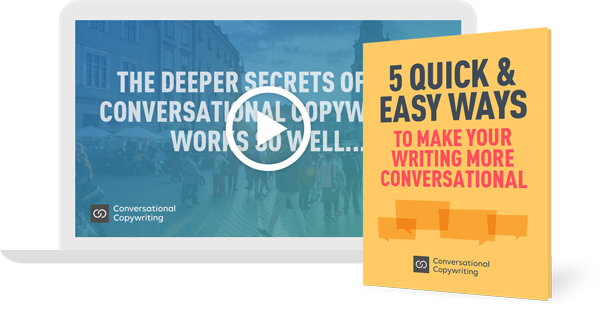
I’ve been around long enough to remember what marketing was like before the arrival of the web.
Back in the 1980s I was a print copywriter, writing ads for magazines and newspapers.
I loved the craft. And I worked with an art director who was equally passionate about his work.
Our ads were highly polished. We spent days or sometimes even weeks on a single ad. The final results were as near perfect as we were able to achieve.
Truth be told, we cared more about the opinions of the next industry awards committee than we did about the opinions of our readers.
In a very real sense, we lived and worked in an adland ivory tower.
But that was then. And now is now.
Your audience wants to feel included…
Those print ads we created were pushed AT our audience through the pages of magazines.
We were the ones with a voice. Our readers were the passive recipients. They had no voice. And if they had opinions about our ads, we never heard about them.
Back then, when all media were one-way, people seemed to accept that.
But not today. Because the web isn’t a one-way, broadcast medium.
It’s a place where your audience also has a voice, and they want to be included in the conversations you’re having.
The rise of a more empathetic approach to marketing
By definition, empathic marketing is about giving a damn about the people you are reaching out to.
That means listening to your audience, really seeing them, getting a clear grasp of what’s important to them and – above all – respecting the people you would like to become your customers.
This is the absolute opposite of my ivory tower experience, writing print ads AT people.
To see this more empathetic approach to marketing in action, look at campaigns like Always #likeAGirl. Or Dove Real Beauty Sketches. Or Kate Spade New York #infullbloom.
In each of those examples, you’ll see how the divide between the company and the audience is dissolving.
The traditional wall between the business and the audience, and even the filmmaker and the audience, has been knocked down.
In the words of Mary Beech, Executive VP and CMO at Kate Spade New York…
“It feels less like marketing and more like a conversation that customers actually look forward to having with us.”
This is where conversational copywriting comes in…
I know what it feels like to write copy AT an audience.
And I know how different the experience is when I write in a way that is more empathetic, respectful and conversational.
Writing conversationally forces me to approach copywriting with a very different mindset.
The conversational approach puts me in a place where I can share my message without it feeling like I’m selling AT anyone.
It feels like I’m coming down from that ivory tower, stepping out into the crowd, being side-by-side with the people I’ll be writing to… and then writing to them as if I were in conversation with friends.
And that’s a powerful shift, because in the online environment, that’s what people want.
They don’t want to be sold at, but they’ll look forward to being included in the conversation.
Conversational Copywriting is the future of selling online. You can build your expertise now, or try catching up later. Find out about the course here…
